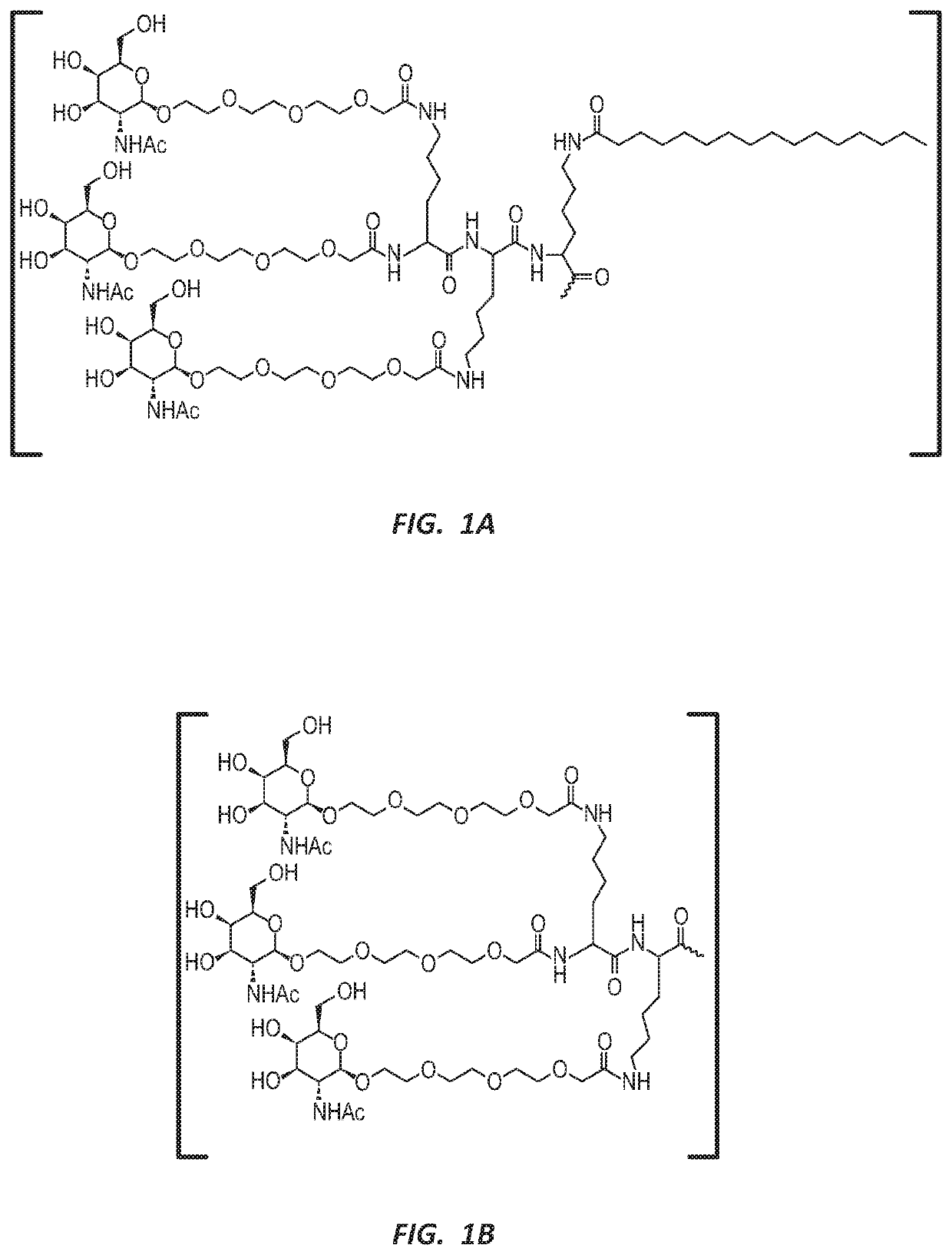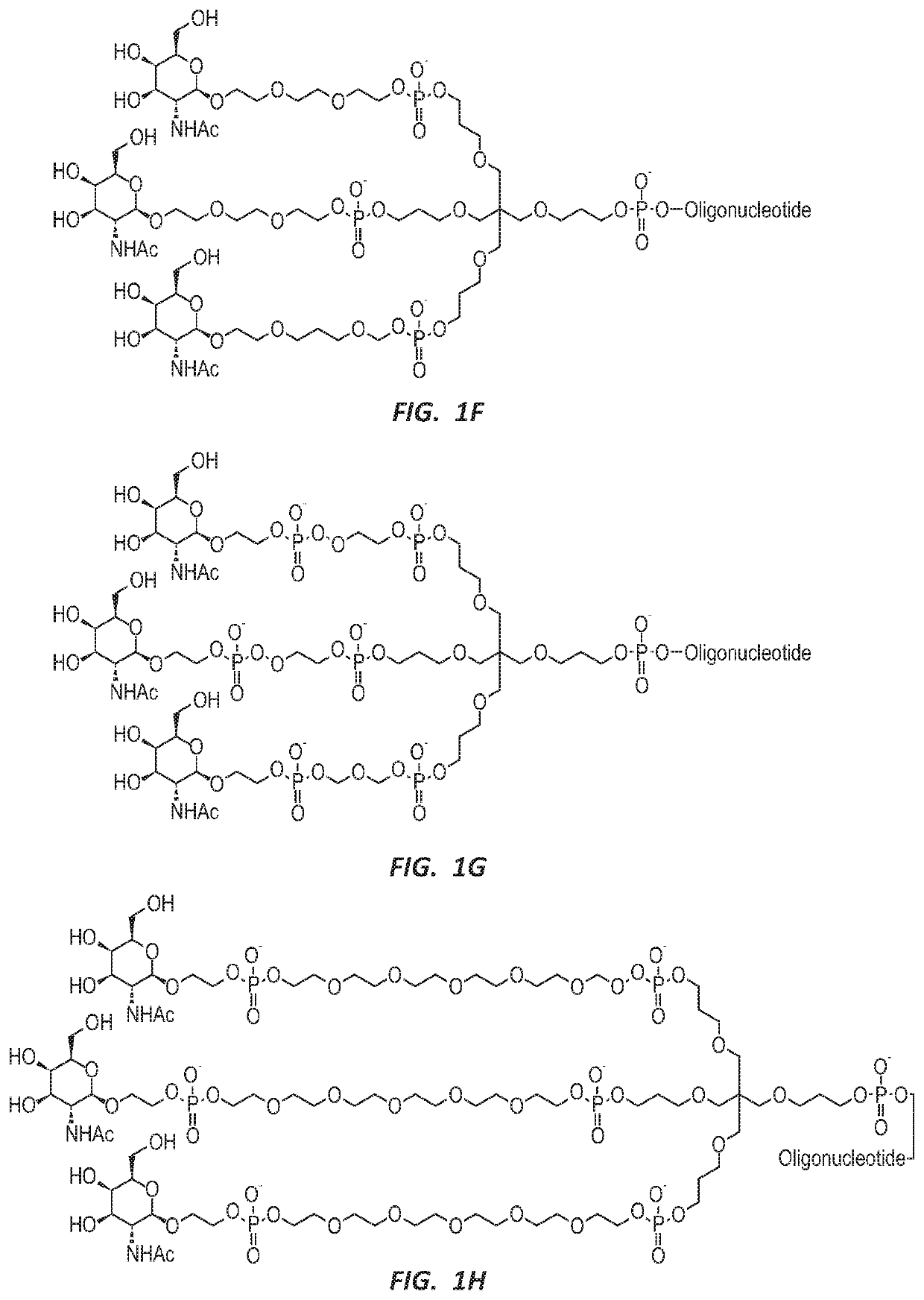NUCLEIC ACID MOLECULE FOR REDUCTION OF PAPD5 AND PAPD7 mRNA FOR TREATING HEPATITIS B INFECTION
a molecule and molecule technology, applied in the field of nucleic acid molecules, can solve the problems of reducing the degree of infectiousness of patients, hbv infection remains a major health problem, and only showing weak immune responses in chronically infected patients, and achieves the effect of simple delivery to the target cell
- Summary
- Abstract
- Description
- Claims
- Application Information
AI Technical Summary
Benefits of technology
Problems solved by technology
Method used
Image
Examples
example 1
for In Vitro Efficacy of Antisense Oligonucleotides Targeting PAPD5 and PAPD7 (Bispecific) in HeLa Cells
[0606]An oligonucleotide screen was done using 16 to 18mer gapmers targeting SEQ ID NO: 17, 18 and 19. Efficacy testing was performed in an in vitro experiment in HeLa cells expressing both PAPD5 and PAPD7.
[0607]HeLa cells were cultured as described in the Materials and Method section. The cells were incubated for 24 hours before addition of oligonucleotides dissolved in PBS. Final concentration of oligonucleotides was 5 and 25 μM, the final culture volume was 100 μl / well. The cells were harvested 3 days after addition of oligonucleotide compounds and RNA was extracted using the PureLink Pro 96 RNA Purification kit (Ambion), according to the manufacturer's instructions.
[0608]PAPD5 and PAPD7 mRNA levels were analysed by Real-time PCR as described in the Materials and Method section.
[0609]The relative PAPD5 mRNA and PAPD7 mRNA expression levels are shown in table 12 as % of average ...
example 2
EC50 and Efficacy in HBV Infected HepaRG Cells
[0610]All the oligonucleotides from Example 1 were tested for their effect on HBV propagation parameters in HBV infected dHepaRG cells.
[0611]For comparative purposes the antisense oligonucleotides of the invention were compared to antisense oligonucleotides targeting HBV mRNA directly. The HBV targeting oligonucleotides are shown in table 13.
TABLE 13Comparative HBV targeting oligonucleotidesSEQDescriptionCompoundID NOReferenceHBV targetingAGCgaagtgcacaCGG27WO2015 / 1732081 (HBV1)HBV targetingGCGtaaagagaGG28WO2015 / 1732082 (HBV2)
[0612]HBV infected dHepaRG cells (described in the Materials and Methods section, HBV infected dHepaRG cells) were cultured in 96-well plates. One day post HBV infection the oligonucleotides were added to the cells in three-fold serial dilutions (20.00, 6.67, 2.22, 0.74, 0.25, 0.08, 0.03, 0.01 μM oligonucleotide) using unassisted uptake (gymnosis). A total of 49 oligonucleotides were tested. The experiment was conduc...
example 3
Screening for In Vitro Efficacy of Antisense Oligonucleotides Targeting PAPD5 and PAPD7 in HeLa Cells
[0618]A further library of 298 oligonucleotides expanding the diversity of the oligonucleotide motifs of SEQ ID NO: 17, 18 and 19 using different designs was generated. Efficacy testing was performed in an in vitro experiment as described in Example 1, with the exception that the screening was only conducted at 5 μM.
[0619]The relative PAPD5 mRNA and PAPD7 mRNA expression levels are shown in table 15 as % of average control samples (PBS-treated cells) i.e. the lower the value the larger the inhibition.
TABLE 15in vitro efficacy of anti-PAPD5 / PAPD7 compounds (single experimentwith duplex QPCR). PAPD5 and PAPD7 mRNA levels are normalized toGUSB in HeLa cells and shown as % of control (PBS treated cells).% PAPD5 mRNA% PAPD7 mRNAof controlof control5 μM5 μMCMP ID NOAvgsdAvgsdCompound (CMP)17_1797.747.1088.553.38TCAaCtttcacTTCAGT17_1886.485.5281.811.73TCaACtttcacTTCAGT17_1966.1313.8378.411....
PUM
| Property | Measurement | Unit |
|---|---|---|
| Volume | aaaaa | aaaaa |
| Volume | aaaaa | aaaaa |
| Volume | aaaaa | aaaaa |
Abstract
Description
Claims
Application Information
 Login to View More
Login to View More - R&D
- Intellectual Property
- Life Sciences
- Materials
- Tech Scout
- Unparalleled Data Quality
- Higher Quality Content
- 60% Fewer Hallucinations
Browse by: Latest US Patents, China's latest patents, Technical Efficacy Thesaurus, Application Domain, Technology Topic, Popular Technical Reports.
© 2025 PatSnap. All rights reserved.Legal|Privacy policy|Modern Slavery Act Transparency Statement|Sitemap|About US| Contact US: help@patsnap.com



